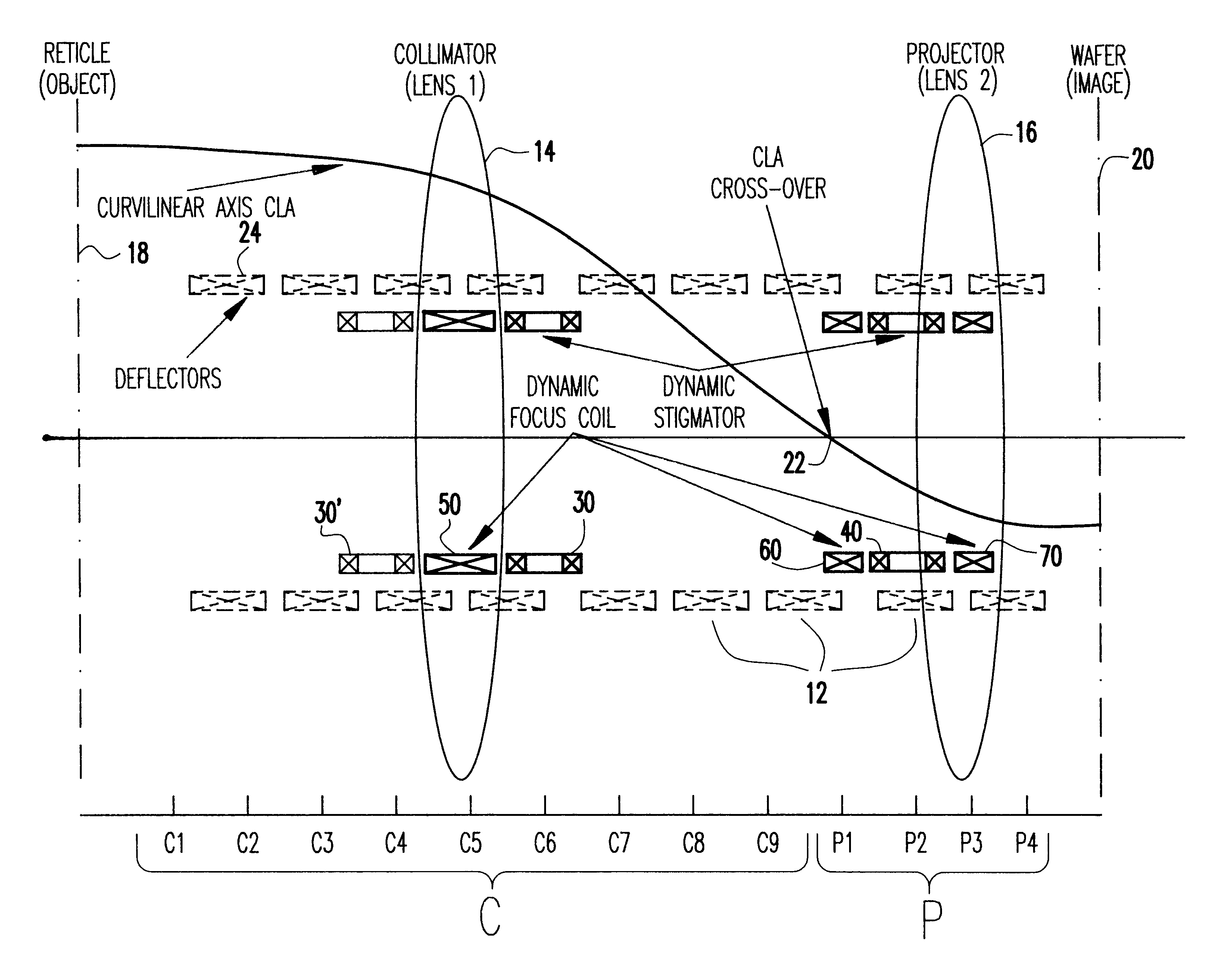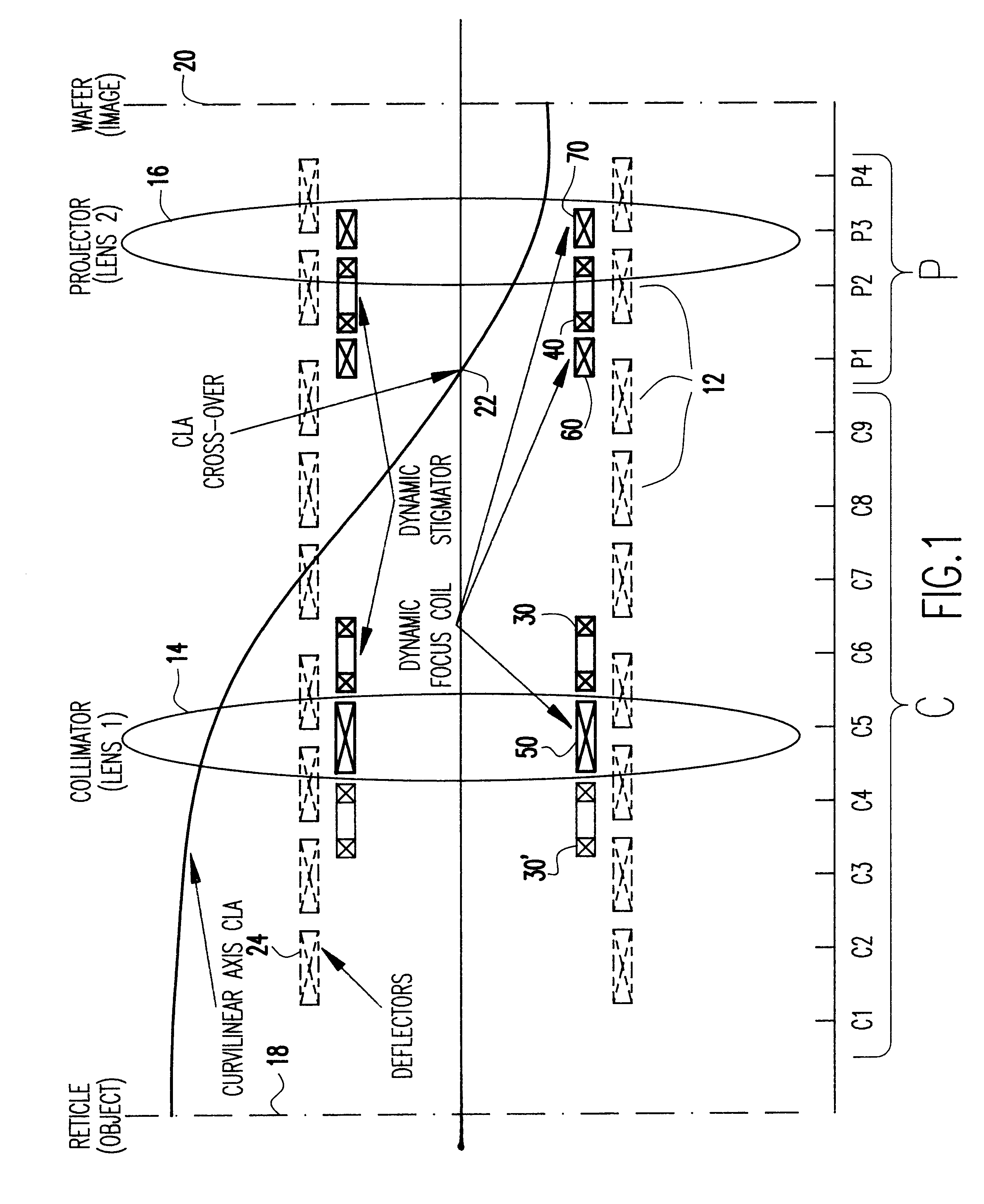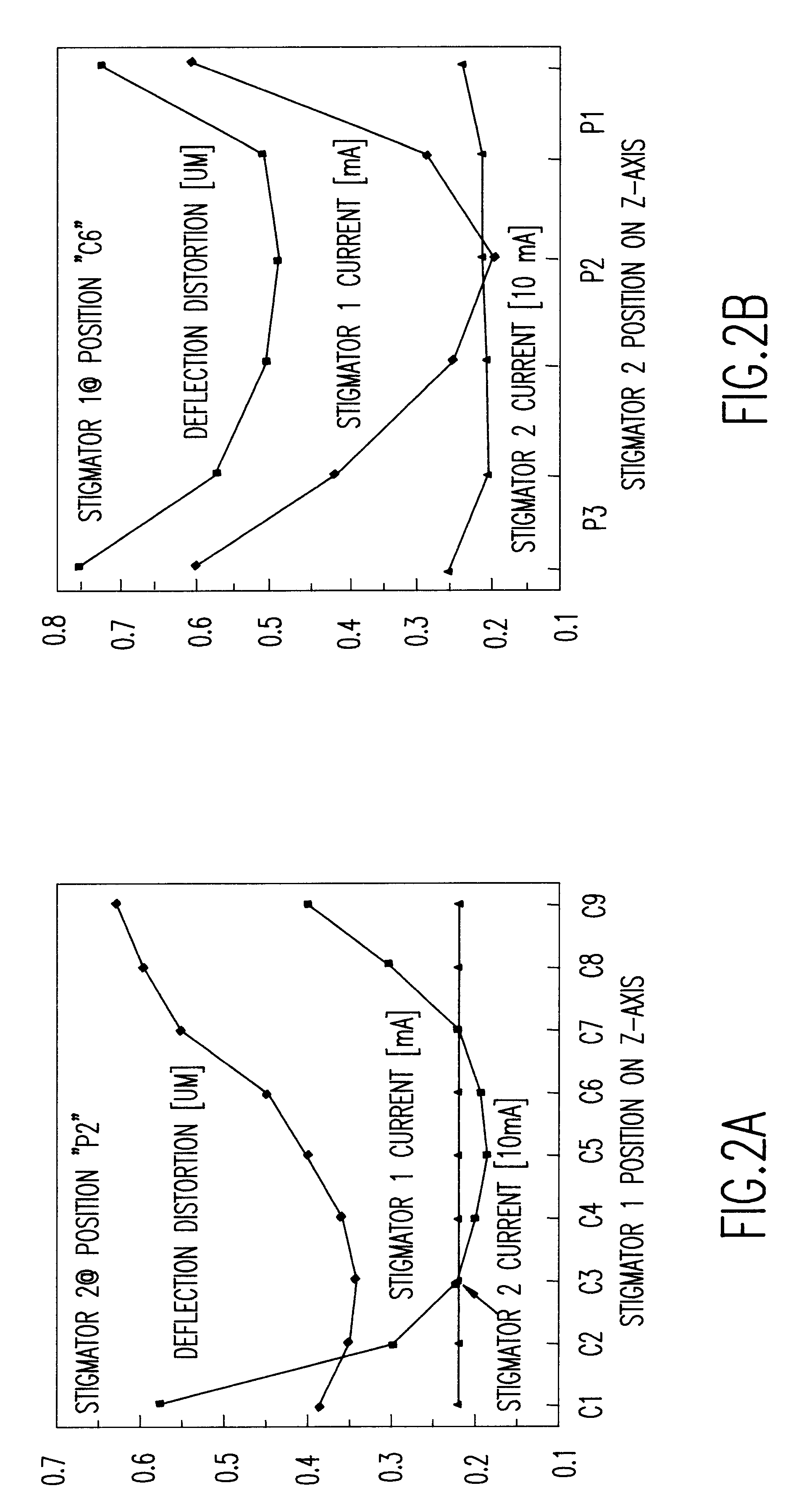Multi-element deflection aberration correction for electron beam lithography
a lithography and electron beam technology, applied in the direction of beam deviation/focusing, magnetic discharge control, instruments, etc., can solve the problems of inability to realistically approach the problem of reducing only viable e-beam exposure, and inability to reduce the exposure time of the sho
- Summary
- Abstract
- Description
- Claims
- Application Information
AI Technical Summary
Benefits of technology
Problems solved by technology
Method used
Image
Examples
Embodiment Construction
Referring now to the drawings, and more particularly to FIG. 1, there is shown a schematic, cross-sectional view of the reticle imaging optics with key elements of an e-beam projection system employing LARPO and CVAL optics. Elements of the system which are not important to an understanding of the invention, including the remainder of the e-beam column, are omitted in the interest of clarity. Elements illustrated with dashed lines are schematic depictions of coils 12 forming deflectors of the e-beam projection system with which the invention is employed. Distributed lenses of the system are schematically depicted at 14, 16. These coils and lenses are not drawn to scale in size or location and do not specifically depict any particular e-beam projection system. Accordingly, no portion of FIG. 1 or any other Figure in the application is admitted to be prior art in regard to the present invention.
The reticle imaging optics of FIG. 1 are generally divided into a collimator section C and ...
PUM
| Property | Measurement | Unit |
|---|---|---|
| feature sizes | aaaaa | aaaaa |
| size | aaaaa | aaaaa |
| sizes | aaaaa | aaaaa |
Abstract
Description
Claims
Application Information
 Login to View More
Login to View More - R&D
- Intellectual Property
- Life Sciences
- Materials
- Tech Scout
- Unparalleled Data Quality
- Higher Quality Content
- 60% Fewer Hallucinations
Browse by: Latest US Patents, China's latest patents, Technical Efficacy Thesaurus, Application Domain, Technology Topic, Popular Technical Reports.
© 2025 PatSnap. All rights reserved.Legal|Privacy policy|Modern Slavery Act Transparency Statement|Sitemap|About US| Contact US: help@patsnap.com



